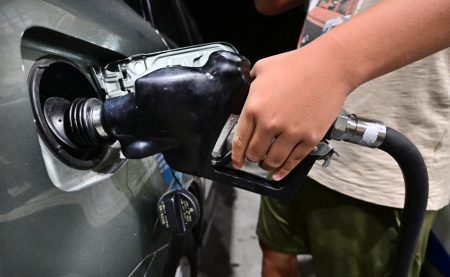Consumer inflation remained persistently high last month, with prices outside of food and energy categories rising by 0.4% from February to March. The core prices are up by 3.8% compared to a year earlier. The White House is facing criticism from Republican critics of President Joe Biden, who are blaming him for high prices. Despite a healthy job market and a near-record-high stock market, many Americans are holding Biden responsible for the inflation. These high prices could impact the Federal Reserve’s decision on whether to cut interest rates this year, as inflation has remained well above the Fed’s 2% target for the third consecutive month.
The March inflation figures pose a challenge to the Fed’s plan of multiple rate cuts this year, as the elevated level of inflation threatens to delay any reduction in interest rates. Fed officials have indicated that they are in no rush to cut their benchmark rate, despite earlier projections of multiple rate cuts this year. The lack of moderation in inflation could delay rate cuts until September at the earliest, or potentially push them off to next year. The latest inflation data has caused concern on Wall Street, with stock prices falling and bond yields rising on fears that the Fed may indefinitely delay interest rate cuts.
Overall consumer prices rose by 0.4% from February to March, with a year-over-year increase of 3.5%. This persistence of elevated U.S. inflation presents a challenge to President Biden’s efforts to address high prices. Biden has emphasized the need for further progress against rising costs, urging Republicans in Congress to support his policies. The costs of owning a vehicle were a significant factor in the price increase last month, with auto insurance surging by 2.6% and auto repair costs increasing by 1.7%. Gas prices also saw a significant rise, contributing to the overall increase in consumer prices.
Despite the challenges posed by elevated inflation, American consumers have remained confident in their spending, according to economists. The surge in auto insurance and repair costs reflects previous increases in auto sales prices. While inflation has come down from its peak in June 2022, average prices are still higher than pre-pandemic levels. This has created hardships for many lower-income families whose wages have not kept up with rising costs. Organizations like the Second Harvest Food Bank of Central Florida are seeing an increased demand for meals, with many beneficiaries struggling to recover from the sharp rise in costs over the past three years.
The inflationary pressures faced by American consumers highlight the need for continued support and assistance for those most vulnerable to price increases. The persistence of high prices could impact the Fed’s decision on interest rates, as policymakers assess the trajectory of inflation and its impact on the economy. President Biden’s efforts to address high prices face challenges amid the ongoing inflationary environment, as he seeks to lower costs for essential items and secure support for his policy proposals. The broader economic implications of sustained inflation will require a thoughtful and strategic approach to ensure stability and prosperity for all Americans.















